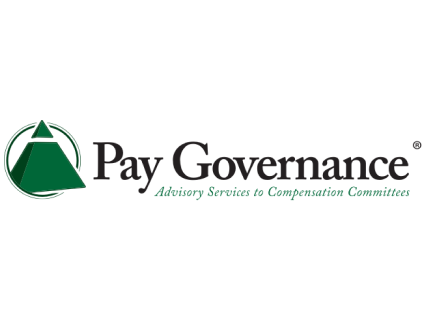Is the Compensation Committee Becoming the New Risk Committee?
Archive

NACD Northern California
Contact Us
Lisa Spivey,
Executive Director
Kate Azima,
Director of Partnerships & Marketing
programs@northerncalifornia.nacdonline.org
Find a Chapter
About The Event
As policies and regulations evolve and the need for strong leadership has become even more critical in these uncertain times, compensation has become a central factor in attracting and retaining top talent, and the risk of mismanaging compensation is significant.
This session explored the latest trends, emerging risks, and upcoming challenges shaping compensation strategies. Panelists
Timothy Chou, Louis Miramontes, Tricia Montalvo Timm, and moderator Tara Tays, examined how compensation committees are increasingly seen as key players in risk oversight, with an expanding responsibility to navigate regulatory changes, public perception, and stakeholder expectations.
VIEW THE RECORDING:
KEY TAKEAWAYS:
- Strategic Role of Compensation Committees - The compensation committee’s role is evolving from merely approving executive pay to aligning compensation with broader company strategy. This includes ensuring that compensation supports business goals and attracts/retains top talent.
- Direct Line to the CEO - With a close connection to the CEO, compensation committees gain a deeper understanding of the organization’s needs, helping them design incentives that align with company performance, growth goals, and market positioning.
- Regulatory Awareness - Stay current on evolving regulations such as Say on Pay, clawbacks, incentive risk assessments, and compliance with diversity and environmental metrics. Be mindful of how macroeconomic changes affect compensation strategies and performance metrics.
- Aligning Compensation with Company Culture - Compensation should meet market standards while fostering a culture of growth and personal development. It’s not just about financial incentives but creating an environment that nurtures talent retention and growth.
- Diversity and Pay Transparency - Focus on attracting diverse talent, ensuring equal pay for equal work, and maintaining transparency in compensation practices. Companies should avoid biases in their recruitment practices and actively work to bridge the talent and network gaps.
- Engaging with Activist Investors - Compensation committees should listen to activist investors’ concerns, align compensation with shareholder interests, and defend management's strategy when necessary. Benchmarking against peers ensures competitiveness and transparency in pay decisions.
- Succession Planning - Compensation committees must be proactive in succession planning, ensuring leadership transition plans cover not just the CEO but also key C-suite and other critical roles. Collaboration with the nomination/governance committee is often key.
- Leadership Transition Oversight - During leadership transitions, compensation committees should oversee the design of severance packages and compensation plans for new leaders, ensuring alignment with the company’s strategic goals.
- Adapting Compensation to Market Conditions - Compensation strategies must adjust to market fluctuations, economic downturns, or shifts in company strategy. When stock performance underperforms, revising compensation to retain talent becomes crucial.
- The New Era of Work - As remote and hybrid work models rise, compensation committees should adapt pay strategies to ensure fairness across geographic locations. Additionally, consider how AI and evolving skill needs impact entry-level compensation structures.
- Balancing Executive vs Employee Pay - Address disparities between executive and employee compensation by considering pay equity. Increased transparency in pay disclosures is essential for managing shareholder concerns and maintaining employee morale.
- Employee Stock Purchase Programs - Implementing stock purchase programs helps align employees’ interests with the company’s success, fostering a sense of ownership, though it may not fully address pay disparities.
- Managing Incentive Risks - Avoid compensation plans that incentivize excessive risk-taking. Regularly evaluate compensation structures to ensure they align with the company’s risk profile and don’t encourage harmful behaviors.
- Shareholder Feedback and Communication - Compensation committees should remain attuned to shareholder feedback and maintain effective communication strategies to address concerns about executive compensation practices.
- Caution with Peer-Group Analysis - Be cautious not to rely too rigidly on peer-group comparisons for compensation decisions, as market conditions change and outdated benchmarks may result in misaligned compensation strategies.
- Private Company Vs. Public Company - In private companies, compensation committees have more flexibility in compensation design but should be aware of limitations of equity compensation such as lack of liquidity and tax consequences if using RSUs.
- Planning for an Exit - In preparation for M&A, private companies should seek to standardize severance and change-in-control packages for their executive team so that they align with long-term goals and ensure they protect key talent during the transition.
- Ongoing Governance Improvement - The board should challenge itself to continually improve governance practices by engaging with organizations like NACD and collaborating with other directors to share best practices and ensure ongoing growth.
Thank you to our generous partner for making this event possible:
NACD Northern California
Contact Us
Lisa Spivey,
Executive Director
Kate Azima,
Director of Partnerships & Marketing
programs@northerncalifornia.nacdonline.org
Find a Chapter
By registering for an NACD or NACD Chapter Network event, you agree to the following Code of Conduct.
| NACD and the NACD Chapter Network organizations (NACD) are non-partisan, nonprofit organizations dedicated to providing directors with the opportunity to discuss timely governance oversight practices. The views of the speakers and audience are their own and do not necessarily reflect the views of NACD. |



